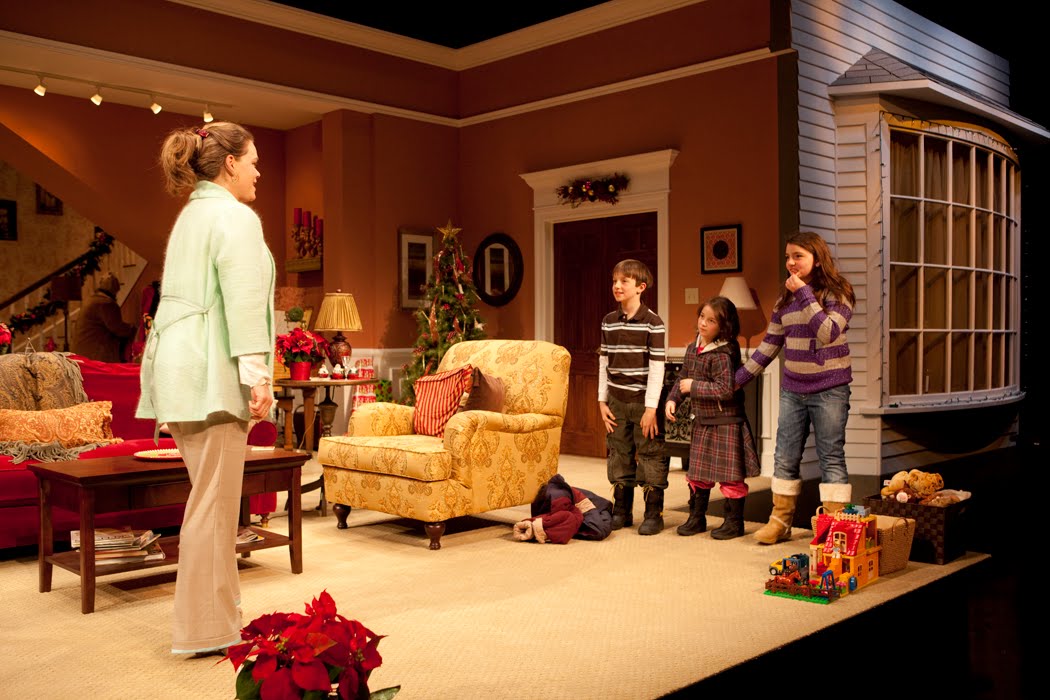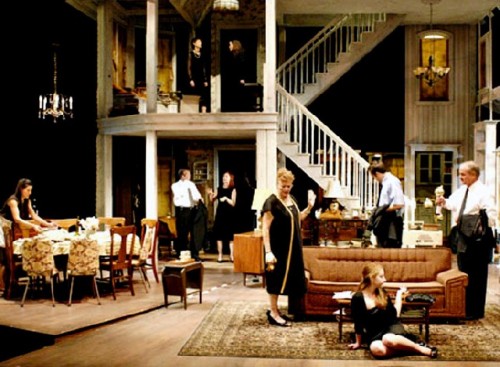Aside from the play itself, getting to know a little bit about the history during the time that this play was made might be useful. Historical events in which took place during this time period could have had an effect on the "characters". This could all lead to discovering why a specific character in the play might say, or act the way they do. Acting is all about re-acting, but in order to get into your characters shoes, you need to become them. Knowing the gender roles that signifies this specific time period might be that last key in re-creating a character.
http://www.historycentral.com/dates/1870ad.html
My Blogs
Dramaturgy
Thursday, March 10, 2011
Lightng Techniques
You've got your script for the play you want to produce, you have a clear idea on what you want your set to look like, and you got your cast for the show; but your not done just yet. If you don't have a crew to help the actors out (such aslighting!), you won't even have a show for the audience to watch. By lighting, I don't mean to just shine a flash light at the stage and make the actors go, you definitely need skilled lighting technicians in the back to support you.
In lighting there are two goals: get enough light; use the light you have to shape and define objects in the scene. Lighting is often tried out "on paper" by using a lighting diagram before it's actually set. Many potential problems can be spotted in the process of constructing a lighting diagram. The most common of these is to light for a theoretical "stage front" instead of lighting for specific camera positions. It's also useful in anticipating problems with shadows falling where they're not wanted. Every light casts a shadow
Adding to this, with just the right colors or pictorial designs on stage, you could create a whole new look to a show and bring out the best in everything: actors, set design.
http://www.tv-handbook.com/Lighting_Techniques.html
In lighting there are two goals: get enough light; use the light you have to shape and define objects in the scene. Lighting is often tried out "on paper" by using a lighting diagram before it's actually set. Many potential problems can be spotted in the process of constructing a lighting diagram. The most common of these is to light for a theoretical "stage front" instead of lighting for specific camera positions. It's also useful in anticipating problems with shadows falling where they're not wanted. Every light casts a shadow
Adding to this, with just the right colors or pictorial designs on stage, you could create a whole new look to a show and bring out the best in everything: actors, set design.
http://www.tv-handbook.com/Lighting_Techniques.html
Exterior Entertainment
Aside from the actors voices, background music can make a huge difference with scenes. Having a pleasant warm welcoming type music to start out the play, and during the climax it could be vicious or dramatic to intensify the moment of the scene or act. It's like the difference between a solo singer and a solo singer with choruses in the background filling in the blank spots. It can make the transitions flow better.
All through the colonial period and well into the 19th century, the most common form of popular music in America was the ballad. Musicologists sometimes formulate more precise definitions, but fundamentally a ballad is simply a song that tells a story. The story may be fact or fiction, or a mixture of both, but it has a central narrative: a tale of romance or adventure, the exploits of a famous hero (or villain), the history of a battle won or lost. Ballads both old and new were passed along by travelers from one area to another and handed down by families from one generation to the next. Originally this transmission was entirely oral; but eventually most of the songs were written down and published as broadsides: single sheets of paper printed on one side only, easily and inexpensively produced and widely distributed.
http://www.suite101.com/content/popular-music-in-19thcentury-america-a173154
All through the colonial period and well into the 19th century, the most common form of popular music in America was the ballad. Musicologists sometimes formulate more precise definitions, but fundamentally a ballad is simply a song that tells a story. The story may be fact or fiction, or a mixture of both, but it has a central narrative: a tale of romance or adventure, the exploits of a famous hero (or villain), the history of a battle won or lost. Ballads both old and new were passed along by travelers from one area to another and handed down by families from one generation to the next. Originally this transmission was entirely oral; but eventually most of the songs were written down and published as broadsides: single sheets of paper printed on one side only, easily and inexpensively produced and widely distributed.
http://www.suite101.com/content/popular-music-in-19thcentury-america-a173154
Broadening Your Mind
You always want to make your production your own and not an exact copy of someone else. That doesn't mean you can't look at other people's work. Getting ideas of how to approach something is very useful. It's kind of like that saying, two minds are better than one.
The movie version of A Doll's House starring Christopher Plummer & Julie Harris (1959).
http://www.youtube.com/watch?v=qssF73w6thw
The movie version of A Doll's House starring Christopher Plummer & Julie Harris (1959).
http://www.youtube.com/watch?v=qssF73w6thw
The Set Design
Another very important aspect with producing a play is the set design. Having the right background setting can bring out the best in plays, especially if they are very specific with every inch of detail whether it's the corner of a chair, the type of fabric on the couch, etc. The color scheme can be a huge factor as well (walls, carpet). Depending on what colors you choose with furniture can either disturb or intrigue audience members, as well as bring out the best of the that time period.






Wednesday, March 9, 2011
19th Century Fashion
Fashion back in the late 1800's were obviously different than the type of clothes we have in the present day. Especially with some many cultures coming together and new styles being created, looking back at what people wore then, you can easily identify what era they were from because it was so distinctive.
Chemise:A woman's one piece undergarment.
Corset:A stiffened undergarment worn for support or to give shape to the waist and hips.
Petticoat: A skirt worn under a dress.
Pantalettes were the undermost garment a Lady would wear. Unlike the plain knee length drawers, the pantalette was longer in its leg length reaching passed the knee. It was decorated with tucks and flounces. They were made from Silk or Linen.
Another undergarment worn was the a chimise pronounced "shimmy". This was a loose undergarment that reached below the knees. It had a drawstring on the neckline and a button on the drawers. The chemise was calf lengthed and often had embroidered hems.
Next was the corset. She would put the corset on over the chemise. The corset itself had many designs. It was designed to give shape to the hips and waist. And to lift the bust area with support. It may have been a simple design with a little embroidery and lace. It tied in the back.
She then put on the petticoat. How many petticoats she wore was often determined by the temperature and the season. If it was summer she may only wear one. But in the bitter cold temperatures of winter many women wore five or six petticoats under their dresses.
In the mid 1850's the hoops became popular to wear. After having put on the chemise, corset, and petticoat the 19th century lady would put on the hoop skirt. Some of the these were made with thin steel wire and other materials. Over the hoop she would wear her finest petticoat with pretty lace and embroidery on the hem. Finally, after layering herself with the undergarments she would then put on the dress. And last but not least, a lady always wore her gloves and her bonnet.


http://gallery.sjsu.edu/paris/fashion/
http://www.google.com/imgres?imgurl=http://www.lovesickcorrectiveapparel.com/images/essay/ChildCorset.gif&imgrefurl=http://www.lovesickcorrectiveapparel.com/corset/advice/aboutcorsets.html&h=565&w=700&sz=42&tbnid=5XX0wX5ac6IdTM:&tbnh=113&tbnw=140&prev=/images%3Fq%3D19th%2Bcentury%2Bcorset&zoom=1&q=19th+century+corset&hl=en&usg=__0hiS5rSe9rXS8vy7d4qZihqmpC4=&sa=X&ei=69B5TYCMEtSErQGVgc3kBQ&ved=0CCgQ9QEwAg
Chemise:A woman's one piece undergarment.
Corset:A stiffened undergarment worn for support or to give shape to the waist and hips.
Petticoat: A skirt worn under a dress.
Pantalettes were the undermost garment a Lady would wear. Unlike the plain knee length drawers, the pantalette was longer in its leg length reaching passed the knee. It was decorated with tucks and flounces. They were made from Silk or Linen.
Another undergarment worn was the a chimise pronounced "shimmy". This was a loose undergarment that reached below the knees. It had a drawstring on the neckline and a button on the drawers. The chemise was calf lengthed and often had embroidered hems.
Next was the corset. She would put the corset on over the chemise. The corset itself had many designs. It was designed to give shape to the hips and waist. And to lift the bust area with support. It may have been a simple design with a little embroidery and lace. It tied in the back.
She then put on the petticoat. How many petticoats she wore was often determined by the temperature and the season. If it was summer she may only wear one. But in the bitter cold temperatures of winter many women wore five or six petticoats under their dresses.
In the mid 1850's the hoops became popular to wear. After having put on the chemise, corset, and petticoat the 19th century lady would put on the hoop skirt. Some of the these were made with thin steel wire and other materials. Over the hoop she would wear her finest petticoat with pretty lace and embroidery on the hem. Finally, after layering herself with the undergarments she would then put on the dress. And last but not least, a lady always wore her gloves and her bonnet.


http://gallery.sjsu.edu/paris/fashion/
http://www.google.com/imgres?imgurl=http://www.lovesickcorrectiveapparel.com/images/essay/ChildCorset.gif&imgrefurl=http://www.lovesickcorrectiveapparel.com/corset/advice/aboutcorsets.html&h=565&w=700&sz=42&tbnid=5XX0wX5ac6IdTM:&tbnh=113&tbnw=140&prev=/images%3Fq%3D19th%2Bcentury%2Bcorset&zoom=1&q=19th+century+corset&hl=en&usg=__0hiS5rSe9rXS8vy7d4qZihqmpC4=&sa=X&ei=69B5TYCMEtSErQGVgc3kBQ&ved=0CCgQ9QEwAg
Breaking Down The Play
A gender stereotype consists of beliefs about the psychological traits and characteristics of, as well as the activities appropriate to, men or women. Gender roles are defined by behaviors, but gender stereotypes are beliefs and attitudes about masculinity and femininity.
A Doll's House is the first full-blown example of Ibsen's modernism. It contains a devastating critique of idealism entwined with a turn to the everyday, a celebration of theatre combined with a fierce analysis of everyday theatricality (A Doll's House is teeming with meta theatrical elements) and a preoccupation with the conditions of love in modernity. In A Doll's House, Ibsen mobilizes all these features in a contemporary setting and in relation to a fundamentally modern theme: namely, the situation of women in the family and society. The result is a play that calls for a radical transformation [forvandling], not just, or not even primarily, of laws and institutions, but of human beings and their ideas of love.
http://muse.jhu.edu.ezp.lib.cwu.edu/search/results?search_id=1445100122&action=reload
A Doll's House is the first full-blown example of Ibsen's modernism. It contains a devastating critique of idealism entwined with a turn to the everyday, a celebration of theatre combined with a fierce analysis of everyday theatricality (A Doll's House is teeming with meta theatrical elements) and a preoccupation with the conditions of love in modernity. In A Doll's House, Ibsen mobilizes all these features in a contemporary setting and in relation to a fundamentally modern theme: namely, the situation of women in the family and society. The result is a play that calls for a radical transformation [forvandling], not just, or not even primarily, of laws and institutions, but of human beings and their ideas of love.
http://muse.jhu.edu.ezp.lib.cwu.edu/search/results?search_id=1445100122&action=reload
Subscribe to:
Posts (Atom)